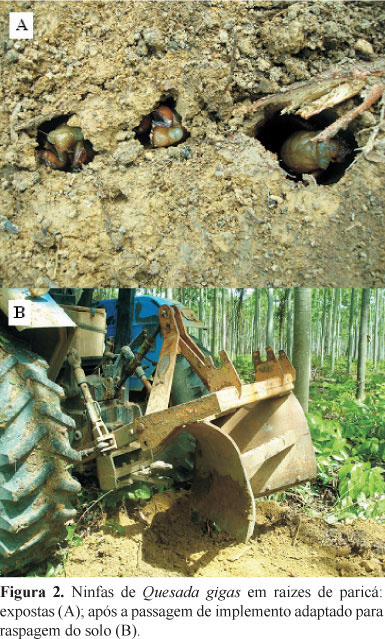The objective of this work was to establish a method for cicad (Quesada gigas) population monitoring and for the evaluation of the effectiveness of thiamethoxam, carbofuran and imidacloprid doses on the control of cicad nymphs, in reforestation with paricá (Schizolobium parahyba var. amazonicum). The following insecticide doses were used: 2.0, 4.0, and 6.0 kg ha-1 of Actara (250 WG) commercial product, for thiamethoxam active principle; 7.15, 14.30, and 21.45 L ha-1 of Furadan (350 FS), for carbofuran; 4.0, 9.0, and 13.5 L ha-1 of Provado (200 SC), for imidacloprid. The three doses of each product were applied in the total area. Three biweekly evaluations were done after the applications to assess the number of holes and live nymphs, using a tractor implement to open trenches with 7.0-m length, 0.8-m width and 0.07-m depth. All active principles tested were effective in reducing Q. gigas nymph population, but there was no significant effect of the evaluated doses. Carbofuran and thiamethoxam active principles were the most promising ones, with 75-80% of nymph infestation control. The trench opening with the tractor implement is effective for monitoring Q. gigas nymph population in reforestation with paricá.
Quesada gigas; Schizolobium parahyba var. amazonicum; forest entomology; soil pests






